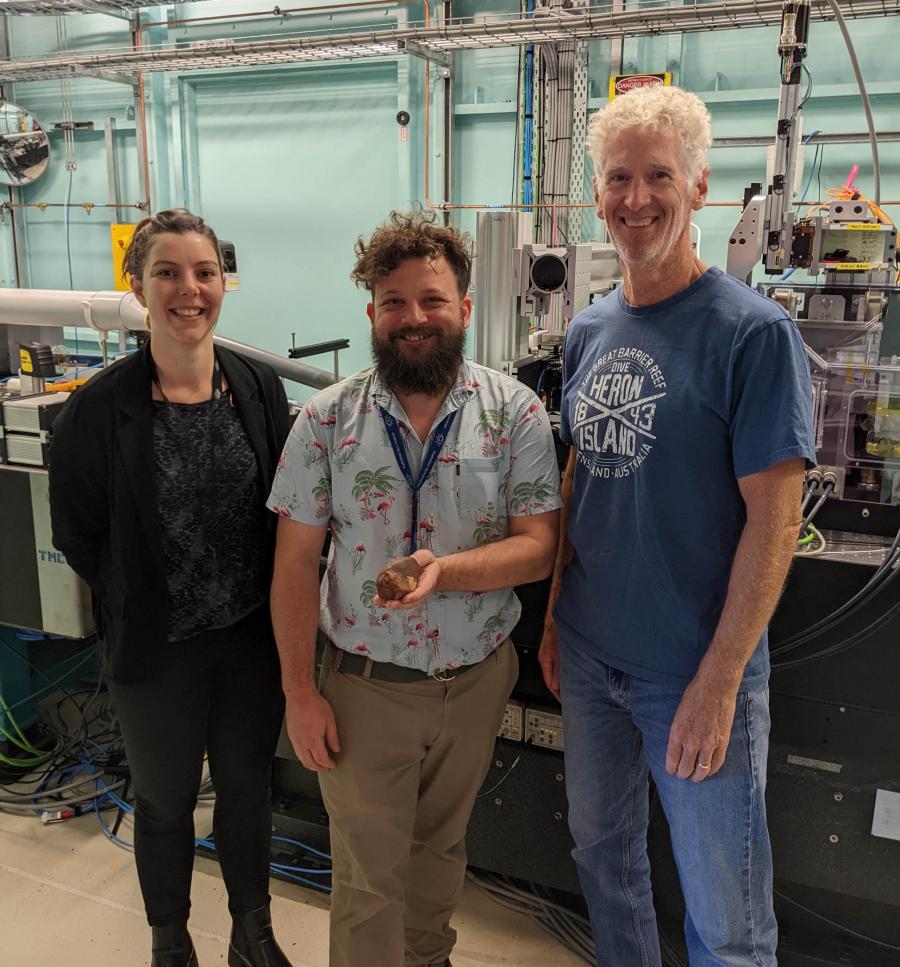Key Points
Earth meteorites could be used to find evidence of life on the planet Mars
The approach involves comparing meteorite chemistry which is affected by weathering and the activity of microbes in arid environments
X-ray fluorescence microscopy was used to detect the location and quantity of minerals of interest
Monash University, University of Queensland and Australian National University researchers have used ANSTO’s Australian Synchrotron in their study of meteorites found on Earth that could be used in future to find evidence of life on the planet Mars.

The examination of meteorites recovered from the Nullarbor Plain in western South Australia by a joint team that included Dr Andrew Langendam from the Australian Synchrotron contained organic residues in the form of microfossils preserved in mineral veins within the dense rock.
“It has been an established site for finding meteorites since the 1980s. The dark iron-rich meteorites stand out against the white limestone and red soil of the plain, ” said Dr Langendam. Link to video
The research revealed that a variety of fossil microorganisms, diatoms, bacteria and fungi, were entombed and preserved within veins of calcite and gypsum.
X-ray fluorescence microscopy at the Australian Synchrotron supervised by instrument scientists Dr Jessica Hamilton (then a PhD student at Monash) and Dr David Paterson, both co-authors, confirmed that redox-active metals, such as manganese and iron, were mobilised in vein-filled cracks within the meteorite by environmental or microbial activity.
“The location and quantity of calcium, iron and manganese can be delineated in the sample by the ultra-sensitive technique. It revealed that the manganese enrichment occurred at the rim of calcite-gypsum veins,” said Dr Hamilton.
The research team noted that meteorites could preserve a suite of microfossils, organic biosignatures and records of nutrient cycling under the arid conditions on the Nullarbor.
Co-lead author on the paper published in Geochemica et Cosmochemica Acta and Frontiers in Microbiology,







